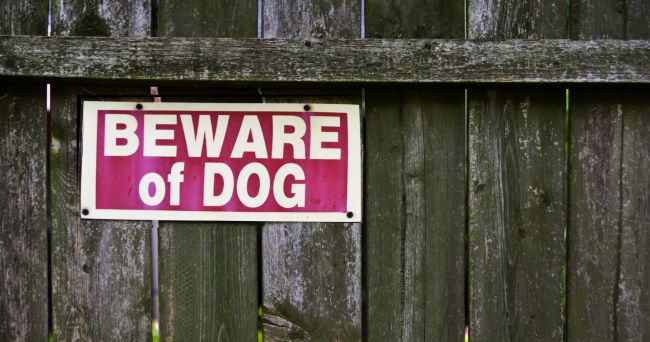
Not all dogs bite. In fact, most dogs only ever nip someone’s direction as a warning sign, rather than doing so with the intention to hurt them. However, when a dog does snap, rarely is this action unprovoked. Learn why good dogs become biters, what incites this aggressive behavior, and how to avoid it at all costs!
Reasons Why Dogs Bite
Biting usually functions as a warning, or as the result of a dog’s boundaries not being respected. When a human understands the concept of respect and the healthy exertion of authority, a dog is much less likely to become a biter. However, there are a number of triggers and motivations which insight dogs to bite.
Possessiveness: One of the primary triggers for defensive behavior from dogs, is to wrestle with them over their toys, space or food. Dogs that receive no sense of boundaries can become highly aggressive, particularly in the moment that an item of choice is taken from them.
Fear: Factors that qualify as “unknowns” such as strangers, unfamiliar places, loud noises, other dogs, and fast-approaching figures immediately threaten a dog’s safety. This causes the “fight or flight” mentality to kick in; and most dogs will retaliate by fighting. When a dog is frightened, be sure to give him a wide berth of space.
Pain: The same way cornered dogs will lash out and be violent, when a pup is in pain, he becomes two things 1) protective, wanting to guard the vulnerable area and 2) fearful that the hurt will increase, and afraid that he is weakened and open for attack. Be gentle and slow-moving when approaching dogs in pain.
Protection/Maternal Instincts: Guard dogs and new mothers are known for shifting into protective mode, which can sometimes lead to biting. In an attempt to keep her family safe from intruders, the dog might snap at prying hands reaching for her young; dogs can become hostile when they are guarding something precious.
Dominance: Though it is rare for dogs to resort to biting when they are trying to gain dominance over a human, it does occur. Even dogs who seem loyal and obedient have been known to attack (and in some cases kill) their owners. One way to overcome the battle for authority, is to teach the dog from a young age to fully submit to their master. If danger is to be avoided, this element of training is imperative.
Notorious Biting Breeds
In a survey spanning nearly 30 years, it was found that certain breeds were more inclined to biting than others. The unfortunate biting incidents do not mean that these breeds are altogether unreliable, or that they make bad family pets. Rather, they respond poorly to physical provocation, they have a highly protective demeanor, and require boundaries. To avoid negative behaviors, provide suitable training for the dog, and ensure there is supervision when they are around children and small animals. Below are the dogs with the highest record of biting incidents, as well as dog breeds that attack children the most frequently.
- German Shepherd
- Rottweiler
- American Pit Bull Terrier
- English Bulldog
- Alaskan Malamute
- Boxer
- Chow Chow
- Bullmastiff
- Akita Inu
- Siberian Husky

